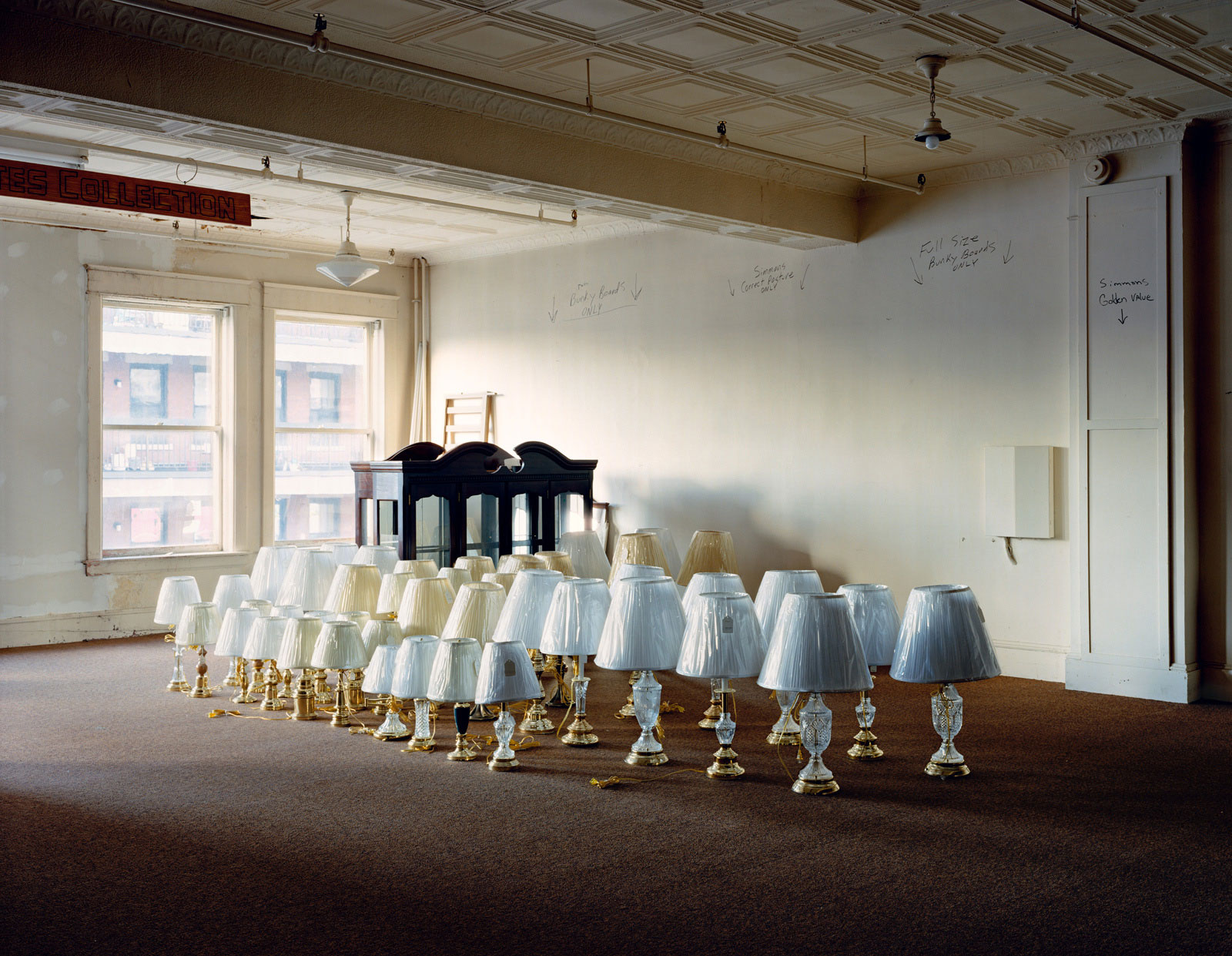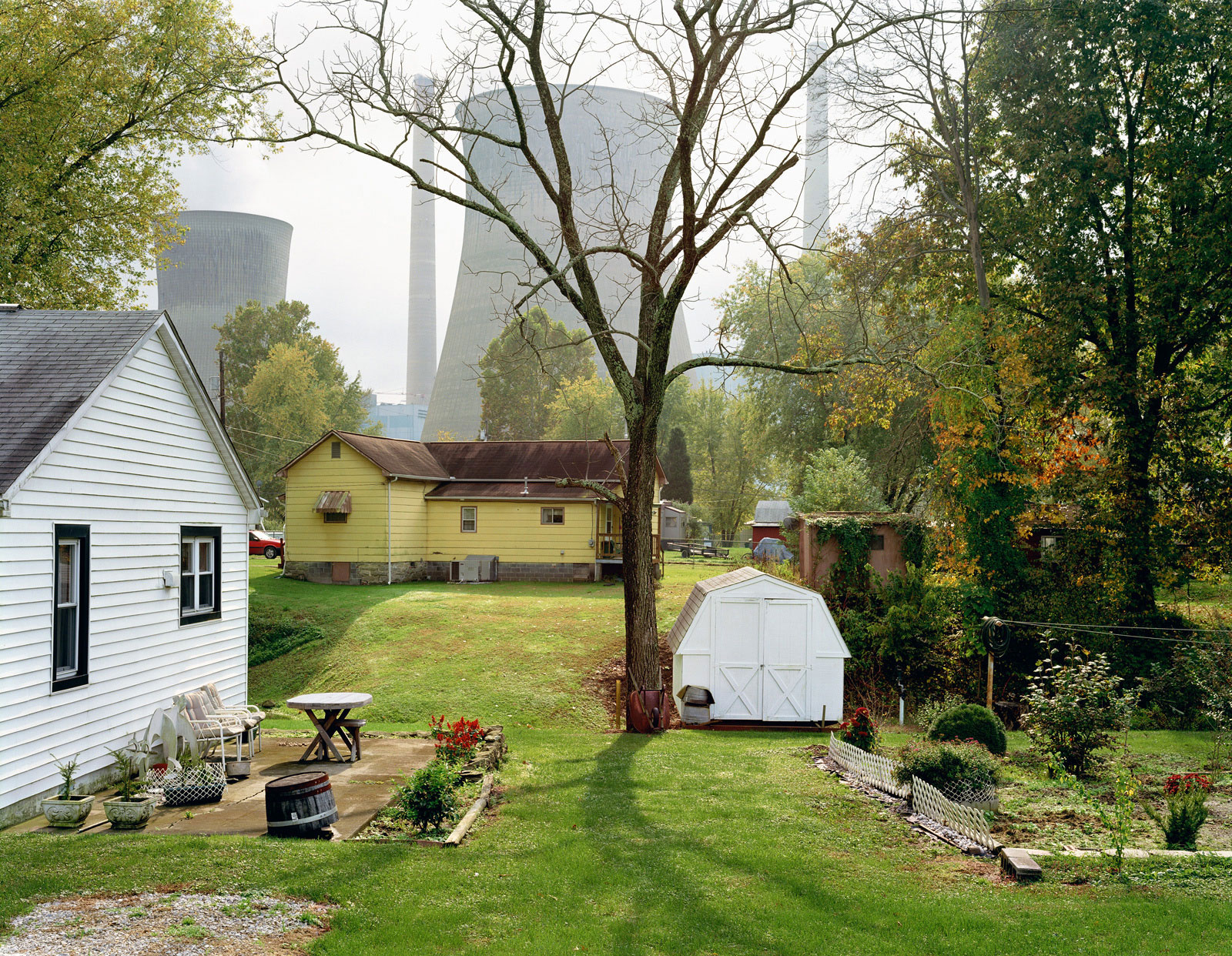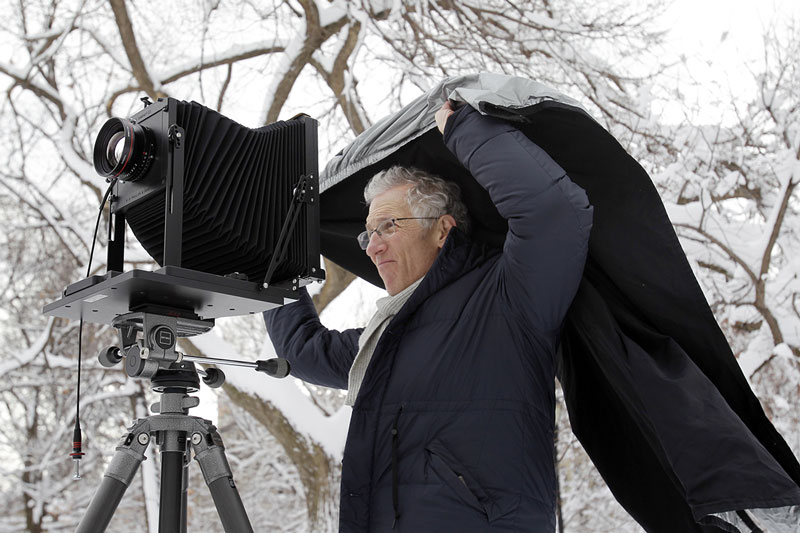Mitchell “Mitch” Epstein (born 1952 in Holyoke, Massachusetts) is an American contemporary documentary photographer, and among others, the first to make significant use of color. He has a particular interest in the link between man and land, as well as the human condition. After a first period influenced by street photography, Mitch Epstein started to work with a more constructive approach, similar to the one of the new topographers.
Early Work
In the early 1970s, Epstein studied at the Cooper Union, New York, where he was a student of photographer Garry Winogrand, before he dropped out because he started to loose patience with being in a classroom. In 1978, he traveled to India and met his future wife, director Mira Nair, for whom he was a producer, cinematographer, and set designer on several movies. He will later publish a compilation of this period in his book In Pursuit of India.
The series Recreation with pictures from 1973 to 1988 is the first statement in his investigation on being an American in modern times. Ordinary things startle, while extraordinary ones appear at perfect ease in the world. Recreation considers how Americans spend their free time at this period.
Using color in the early 80s, which wasn’t renowned for Art photography, Epstein simply explains the undeniable quality of reality: “It’s a natural thing to use color as it is part of the world – color provides information”.
Family Business (2000-2003)
In 1999, Epstein returned to his hometown of Holyoke, Massachusetts. He started a cross-media project recording his fathers businesses: a low-rent real estate empire and a retail furniture store. “I had never made my family a part of my work in a direct way. But in the fall of 1999, I got a telephone call from my mom: two teenage boys had started a terrible fire in a building that my father owned. The fire took an entire city block down in the town of Holyoke, Massachusetts, where I grew up, and this led to a $15 million lawsuit against my father”.

The personal piece of work includes photographs, writings, interviews, videos… The final result is this awarded book Family Business representing a portrait of a father’s life from the perspective of his son. To Epstein, the key challenge was to find a balance between being honest, very forthright, and direct with the work. “So I saw this project as a way to bring fresh eyes to the stuff that I was made of. This was, after all, my place. It was a place that I had to shut out when I moved to New York in the way many New Yorkers repudiate our origins to carve out the opportunity to begin anew. But after many projects that took me abroad, I was ready to look again at this complex web of family, business, community and the notion of town”. Through this singular story, Family Business documents the more nuanced reality of the American dream.
American Power (2004-2009)
After his first exploration through the United States with Recreation, Epstein traveled back to his homeland with American Power, a vast project born of a subject commissioned in 2003: he was to travel to Cheshire, Ohio, to photograph the destruction of the city. Nearly all of the resident of this small town had been paid off by the American Electric Power Company to leave town and never come back. After they left, their homes were demolished. This deal was made to avoid future lawsuits over environmental contamination. He photographed many abandoned homes of those who sold out.
Beginning to think about how we depend on energy without considering its direct consequences on our lives, this personal experience stayed with Epstein, and six months later, he embarked on a US tour of energy production sites. He began this trip under the Bush era and it took him five years to complete it.

This project questions man’s control over nature, his conquest at any price, by measuring the impact of energy production on lifestyles and his imprint left on the landscape. However, this is not a severe criticism of the system and its leaders, but instead questions and understands the case:
“I’m not a nature photographer. It’s the inextricability of human society and nature that interests me.”
“I wasn’t interested in making a strict, documentary account of power plants. Rather, I was interested in looking more deeply at the inter-relationships between various kinds of power and our cultural and political attitudes towards the theme of energy”. These wide layered pictures are a magistral essay on the economic, ecological, political and societal situation of the US.
He wrote in the monograph that he was often stopped by corporate security guards, and once got interrogated by the FBI for standing on public streets and pointing his camera at energy infrastructure, even to the confiscation of his equipment. This kind of intimidation has multiplied throughout the years of filming. So much that Epstein confides that he photographed fear in the stomach.
His project will also have to adapt to climatic disruptions such as cyclone Katrina which swept Louisiana, New Orleans and the Gulf of Mexico oil rig. Epstein traveled to Louisiana six weeks after the disaster… There again, no moralism but more of a participation in an awareness of the weakness of human constructions facing climate change.
The influence of New York
The boiling of New-York city has been a major inspiration for Epstein, who decided, after having traveled the United States for over a decade, to set his bagages in his adopted home. His 1999 series The City explores the meeting of public and private life in New York and questions its increasing surveillance. He began to spend his time in the streets taking pictures as he learned in the 70s, and realized that the city’s changes began to shape his process:“I began to think about my own life as an example of what each of us has to do to survive in a city like New York: we all construct friendships and associations in a constantly shifting universe of so much diversity and complexity. I used my circle of connections to people, friends, family, and associates to say something about how people function within the larger sphere of their city”.
His love for the big apple is also revealed through the series New York Arbor which crystallizes the most remarkable trees of the city. “Trees have long been an interest of mine, and I wanted to do a piece that was in part about New York and also a work that would take me forward from ‘American Power’”. Again, the artist reveals our relationship with nature: “the cumulative effect of these photographs is to invert people’s usual view of their city: trees no longer function as background, but instead dominate the human life and architecture around them”.
As well, his more recent series Rocks and Clouds accomplished in 2015 was made in the five boroughs of NYC, and it is a long patterns’ inventory of stones and clouds. As all his work, it questions the extent of the conquest of the man on the nature and their cohabitation: “My rocks and clouds, like my trees in New York Arbor, exist (photographically) in relation to human enterprise. I’m not a nature photographer. It’s the inextricability of human society and nature that interests me.”
We can notice the use of black and white in this last series which allows to accentuate the formal and unsuspected force of the chosen motifs. By partially extinguishing the colors of the city, the artist focuses our attention on the essential. Also the use of a 8×10 wide format camera throughout his career helps highlight details and bold his subjects. His images become strong and powerful, without requiring words.

It comes as no surprise that Mitch Epstein won the Pictet price (2011), a Guggenheim Fellowship and the Kraszna-Krausz Photography Book Award (2004), his strong body of work put the finger on important modern society issues. The New-York photographer has released more than 10 books, and his work has been exhibited in numerous major museums, in the United States and Europe.
Links
mitchepstein.net
Mitch Epstein — Alchetron
A Conversation with Mitch Epstein — Urban Omnibus
The lives they lived, a photo essay — NY Times Magazine




























